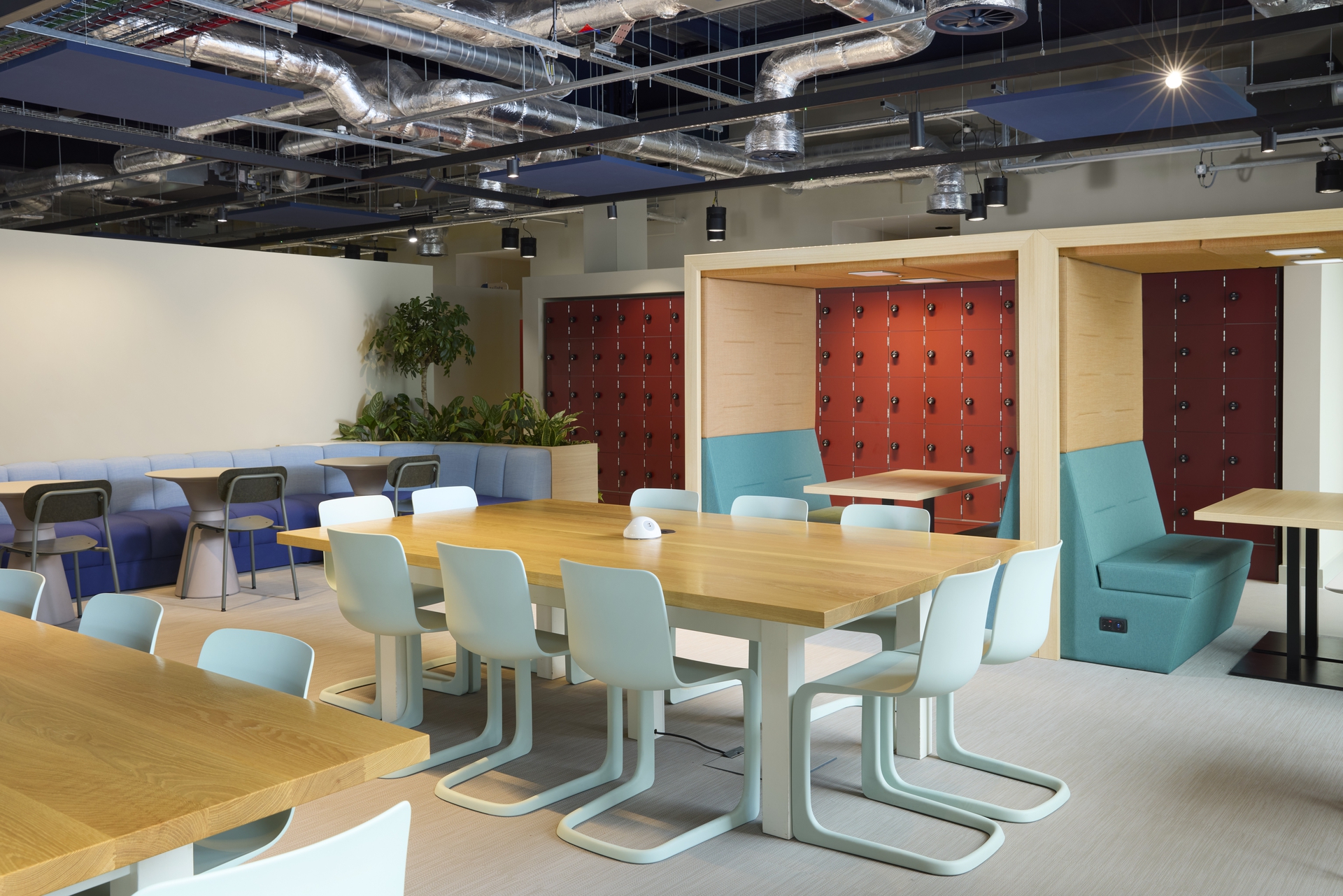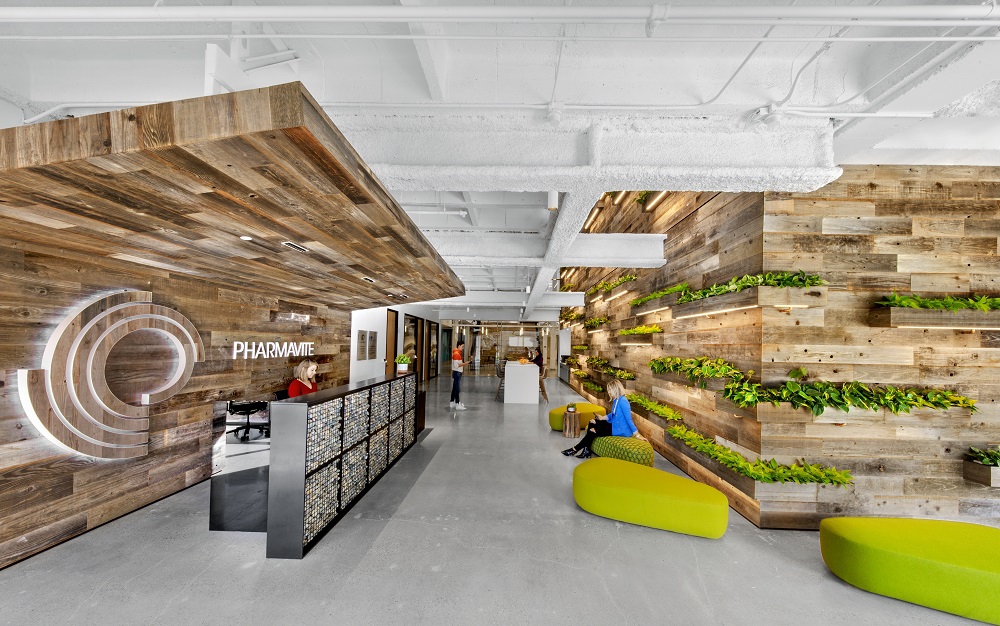
Working Well: Rethinking the Pharma Workplace
The pharmaceutical sector has always been shaped by innovation and driven by necessity, but in recent years, the pace of change has accelerated dramatically.
Alongside scientific breakthroughs, the way work happens across pharma - from bench to boardroom - is undergoing a transformation. The shift to hybrid, increased competition for STEM talent, and a renewed focus on wellbeing are all pushing pharma leaders to reimagine their workplace strategies in line with the evolving needs of both science and people.
It’s not about productivity alone - It’s about creating spaces that empower project-based research teams, enable seamless collaboration between lab and office, and foster environments that support wellbeing, deep focus, and spontaneous connection, all while being able to flex as fast and responsively as the science does.
Insights from industry research point to a clear shift: the employee experience is now central to workplace design. And for pharma organisations, this shift is particularly complex, balancing the rigour of R&D with the cultural drivers of innovation and retention. Pharma leaders are asking themselves big questions:

From lab settings to corporate HQs, pharma organisations are rethinking how workspace design can better support their people, their science, and their mission. In reviewing recent insights from Sodexo’s 2024 pharma workplace trend analysis and Workhuman’s report on employee experience in biotech and pharma, five themes stand out as central to future workplace strategy. These themes capture the intersection of space, talent, and operational agility and show how design is becoming a critical lever for performance, innovation, and wellbeing in the sector.
Flexibility & Modularity
In fast-paced R&D environments, teams need settings that can adapt quickly to evolving project requirements, research phases, and regulatory workflows. Modular spaces with moveable partitions, flexible furnishings, and scalable layouts are helping pharma organisations support collaboration across disciplines, from lab scientists to clinical operations to commercial teams. This agility ensures space can flex around both focused and team-based work, often within the same zone.
Health, Wellbeing & Inclusivity
Wellbeing in pharma is not limited to clinical outcomes; it’s a strategic priority for attracting and retaining STEM talent. Organisations are investing in biophilic design, quiet zones, and ergonomic comfort to reduce stress and improve focus. Just as importantly, they are creating inclusive environments that foster psychological safety, with spaces that support neurodiversity and offer choice in how people engage with their work. This focus on wellbeing helps create a workplace culture that supports innovation, belonging, and resilience.
Collaborative, Tech-Enabled Environments
Drug development is a team sport, often involving cross-functional groups working across global sites. Pharma workplaces are increasingly embedding collaboration hubs, project lounges, and socially oriented spaces that are digitally equipped for seamless hybrid work. From R&D to regulatory teams, employees need frictionless access to tools, data, and one another. Tech-enabled design through plug-and-play furniture, AV-integrated zones, and flexible project spaces helps to keep people connected and collaborative, wherever they’re working from.
Agility for Hybrid & Future Workstyles
Hybrid working in pharma is complex; Lab-based staff often need to be on-site, while other teams move fluidly between home, office, and research facilities. Workplaces that support this range of needs through touchdown points, project-based zones, and quiet spaces give people autonomy and structure. Agile design makes it easier for teams to shift between modes of work, while still enabling meaningful in-person connection. This kind of adaptability supports both day-to-day flexibility and long-term workforce resilience.
Sustainability & Long-Term Value
With environmental goals rising and workplace investment under greater scrutiny, pharma firms are prioritising sustainability alongside long-term value. Modular systems, high-quality materials, and reusable layouts support a circular approach to design. Importantly, they also offer the flexibility to meet evolving compliance needs, safety protocols, and workforce shifts without the disruption of frequent refits. This future-ready mindset helps organisations align workspace decisions with ESG goals, operational agility, and regulatory preparedness.

Bringing Strategy to Life: Real-World Applications in Pharma Workplaces
The principles shaping the future of pharma workplaces are already being applied in practice. At Pharmavite’s California headquarters, employee wellbeing was a central driver of design. Spacestor’s solutions helped create a space that prioritised choice and comfort, with a variety of settings for focus, collaboration, and recharge. The result is a workplace that supports both productivity and a strong sense of culture.
At AstraZeneca’s Macclesfield campus, the focus was on enabling agility across teams. With modular layouts and adaptable furniture, the space supports seamless transitions between different modes of work, making it easier for teams to collaborate while maintaining flexibility across business functions.
These examples show how pharmaceutical organisations are translating workplace strategy into spatial reality and using thoughtful, intentional design to meet the sector’s unique demands and support their people more effectively.
As the pharmaceutical industry continues to evolve, so too must the environments that support its people. From R&D to commercial operations, today’s pharma workplace strategies demand spaces that are adaptable, inclusive, and built around both scientific precision and human needs. Whether it’s enabling hybrid collaboration, improving employee wellbeing, or future-proofing real estate through modular design, the workplace is becoming a key driver of resilience and innovation. The future of work in pharma is already here and it's being built, one flexible, human-centric space at a time. If you’d like to talk to us about your workspace design strategies, get in touch with us here.
